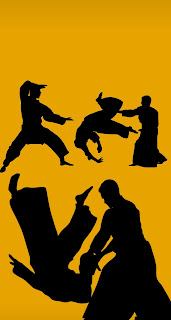Shin guards are protective gear worn on the lower legs to protect the shins from injury during physical activities, particularly in contact sports such as soccer, hockey, and martial arts. They are typically made of materials such as plastic, foam, or metal and are designed to absorb and distribute the force of impacts to the legs, reducing the risk of injury.
Shin guards are an essential piece of equipment in many sports, as the legs are particularly vulnerable to injury during physical activity. In contact sports such as soccer, players often come into contact with other players' cleats, which can cause painful and potentially serious injuries to the shins. Similarly, in hockey, players often use their sticks to make contact with their opponents' legs, which can cause bruising, cuts, or even broken bones.
The use of shin guards is particularly important in martial arts, where the legs are used as weapons and are therefore at a higher risk of injury. In disciplines such as Muay Thai, where fighters use their shins to deliver powerful kicks, shin guards is an essential piece of equipment that can help prevent serious injuries such as fractures or contusions.
There are several different types of shin guards available, each with its own unique design and level of protection. The most common types of shin guards are:
1. Slip-on shin guards: These are the simplest type of shin guards and are designed to slip on over the leg like a sleeve. They are typically made of a stretchy material such as neoprene and have a foam or plastic insert that provides protection to the shin. Slip-on shin guards are lightweight and comfortable to wear but may not provide as much protection as other types of shin guards.
2. Stirrup shin guards: Stirrup shin guards are designed to wrap around the back of the calf and under the foot, providing additional support and stability to the guard. They typically have a hard plastic shell that covers the front of the shin and can provide more protection than slip-on shin guards.
3. Ankle shin guards: Ankle shin guards are similar to stirrup shin guards but also provide additional protection to the ankles. They typically have a hard plastic shell that covers the front of the shin and wraps around the ankle, providing a more secure fit and greater protection.
4. Instep shin guards: Instep shin guards are designed to protect the top of the foot and the instep, in addition to the shin. They typically have a hard plastic shell that covers the front of the shin and extends over the foot, providing complete protection to the lower leg.
The type of shin guard chosen will depend on the specific sport being played, the level of protection required, and the individual preferences of the wearer. For example, in soccer, slip-on shin guards may be sufficient for younger players or those playing at a recreational level, while more serious players may prefer stirrup or ankle shin guards for added protection.
It is important to note that while shin guards can provide a significant amount of protection, they are not foolproof and injuries can still occur. In fact, poorly fitting or improperly worn shin guards can actually increase the risk of injury by shifting around or not providing adequate protection to the shin.
To ensure that shin guards provide optimal protection, it is important to choose a pair that fits properly and is comfortable to wear. Shin guards should fit snugly around the leg, without being too tight or too loose, and should cover the entire length of the shin bone. The top of the shin guard should sit just below the knee, while the bottom should sit above the ankle.
Additionally, shin guards should be checked regularly for signs of wear and tear and replaced as necessary. Over time, the foam or plastic inserts in shin guards can become compressed or worn down, reducing their ability to absorb impacts and protect the shins.
